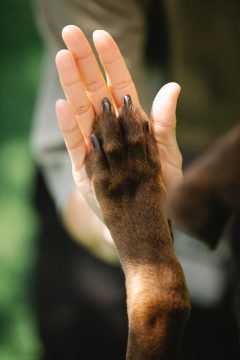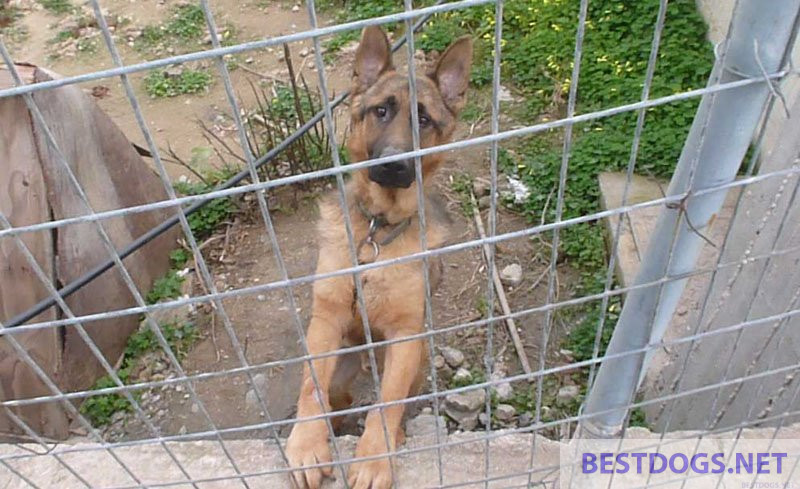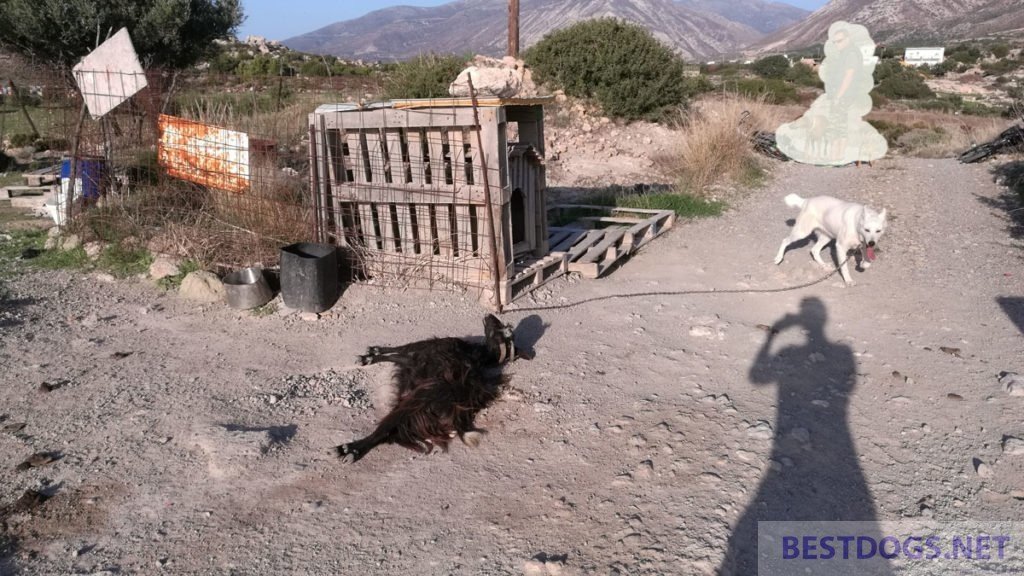Studies about offenders and criminals who started their ‘career’ with animal abuse.

Summarize the results of studies on the relationship between animal abuse and antisocial behavior, which range from misdemeanor and drug offenses to murdering of humans.
Murder often begins with animal cruelty
Table of Contents
Although serial killings have been documented for centuries, little scientific attention has been paid to this important topic. Scholars have attempted to investigate the causality and motivations behind the rare phenomenon of serial killings. However, there is a paucity of research that focuses on the childhood characteristics of serial killers. Some of these studies, based on social learning theory, provide evidence of a link between animal cruelty in childhood and aggression against humans in adulthood.
The ‘Cannibal of Milwaukee,’ Jeffrey Dahmer, who dismembered seventeen people at the end of the last century, first practiced slaughtering dogs and nailing cats to trees and impaling their heads on sticks.
In the early 1970s, notorious serial killer Ted Bundy began a brutal killing spree that likely claimed more than 100 innocent victims. He admitted to murdering 36 women. About two decades earlier, Bundy had tortured defenseless dogs and cats.
Ian Brady, the ‘Moors Killer’ who tortured and killed five children in the 1960s, bragged that he killed his first cat at age 10 and later burned another cat alive, stoned dogs and cut off the heads of rabbits before going after humans.
John Wayne Gacy set turkeys on fire with gasoline-filled balloons. Albert DeSalvo stuffed helpless dogs and cats into crates and shot them with arrows. Dennis Rader, the so-called ‘BTK killer,’ hanged cats and dogs. All of these heinous crimes occurred when the killers were children.
Recent studies have also found that many school spree killers also abused animals before pointing their guns at people.
Eric Harris and Dylan Klebold, who shot up Columbine High School in the U.S., bragged to their classmates about mutilating animals. Kip Kinkel blew up cows and decapitated cats before his attack on parents and students at Thurston High School. Luke Woodham, who murdered his mother and two classmates at Pearl High School, wrote in his diary that he set his dog Sparkle on fire.
Unfortunately, animals are an easy first victim for murderers. ‘Animal abuse is often the first sign of a serious disorder in juvenile and adult murderers,’ wrote Gail F. Melson, professor of developmental studies at Purdue University.
Romania as a case study

In one of the first university studies on the progression of animal abuse, researchers from Teesside University spoke to teenagers in Romania and found that more than eight out of ten thought it was ‘normal’ for stray animals to be abused or killed.
The teens in Romania were also found to be more likely to later attempt suicide or have suicidal thoughts than teens in Germany, the control group. Almost all of the respondents had witnessed street animals being caught in a noose, poisoned or hanged as children.
Tens of thousands of dogs live on the streets in Romania, and strays classified as ‘vermin’ are routinely rounded up and killed under a government ‘slaughter law’ to keep their numbers under control.
Attitudes that domestic violence is normal have been shown to be widespread in this country. In a 2010 Eurobarometer survey on violence against women, 36 percent of Romanians said they thought domestic violence was very common in their country and 48 percent thought it was fairly common, while 58 percent thought ‘provocative behavior’ was a cause of violence against women.
In 2017, the European Court of Human Rights fined Romania after the state failed to hold a man accountable for assaulting his wife eight times. And up to three in four parents in the country use corporal punishment.
According to research by children’s charities UNICEF and Save the Children, levels of abuse and aggression in schools, both by teachers and other children – including sexual abuse – are high.
Romania was a case study that showed what is already known as a ‘link’, but the psychology of the transition from witnessing or suffering aggression to carrying it out is a worldwide phenomenon.
In the UK, Ministry of Justice figures from 2018 show that 13 convicted murderers, 22 child rapists and 99 people guilty of child cruelty had also been convicted or cautioned for animal cruelty in the past decade. Hundreds of sex offenders and people convicted of violently assaulting others were also found guilty of animal cruelty.
And as early as 2002, an Australian study concluded, ‘Animal cruelty is a better predictor of sexual assault than previous convictions for murder, arson, or firearms offenses.’
Link between animal abuse and antisocial behavior

However, the results of another study challenge the assumption that animal abusers usually ‘transition’ from violence against animals to violence against humans. The criminal records of 153 animal abusers and 153 people in a control group were tracked and compared.
It was found that animal abusers were more likely than the others to be interpersonally violent and also more likely to commit property crimes, drug offenses, and public order offenses.
A survey of women in domestic violence shelters found that 71 percent of them had a partner who abused or threatened to abuse pets.
Thus, there was a relationship between animal abuse and a range of antisocial behaviors, rather than violence alone.
Moreover, when examining the temporal sequence between agency records of animal abuse and interpersonal violence, animal abuse was not more likely to be committed before or after violent offenses.
Although these findings refute the assumption that animal cruelty necessarily leads to violence against humans, they do indicate a link between animal cruelty and a variety of antisocial behaviors, including violence.
Animal Cruelty and Domestic Violence

Pets are often used as a means of control or to further harm victims in domestic violence cases. Women escaping domestic violence have reported in studies that their abusers threatened to kill, torture, or otherwise harm their pets – or actually carried out these threats – to prevent them from leaving.
Perpetrators engaged in animal abuse or threats against victims’ beloved pets to isolate victims and children, eliminate competitors for attention, and force the family to keep the violence a secret.
This cruel behavior is commonplace for victims of domestic violence, with more than 85% of women who seek shelter reporting animal cruelty in their families.
Another study found that women in shelters who had fled domestic violence were ten times more likely to report that their partner had hurt or killed their pet than women who had not experienced intimate violence.
Violence against animals not only harms pets, but also domestic violence victims, who suffer from trauma and anxiety that makes it difficult for them to escape from their abusers.
Cruelty to animals and abuse of children

In households where family violence occurs, animals are often the first victims of abuse, followed by children.
The statistics demonstrating a direct link between animal and child abuse are staggering:
- 88% of families surveyed where child maltreatment occurred also had incidents of animal abuse.
- 63% of children entering care admitted that animal abuse had occurred in their family.
- More than 80% of families who came to attention for child maltreatment reported animal abuse in their household.
- More than 60% of families where children were abused and neglected also had pets that were abused and neglected.
But it gets worse: when the surrounding violence becomes ‘normal’, some children sometimes overstep their own boundaries through desensitization and become animal abusers themselves.
More than 30% of domestic violence victims who own a pet reported that their children have injured or killed a pet.
A report published in the International Journal of Environmental Research and Public Health suggests that severe and prolonged trauma, especially when experienced at a young age, can disrupt children’s emotional and social development. As a result, some children develop less empathy toward animals and are more inclined to mimic the abuse they experience at home.
Witnessing animal cruelty can have severe psychological effects on children. Children suppress their feelings about pets in order to cope with the pain they feel at the sight of ongoing animal cruelty. This negatively impacts the healthy development of empathy. In some cases, children killed their pets themselves to gain control of the situation and end the animals’ suffering.
Animal cruelty and sexual coercion

Perversity is a taboo subject, but these things exist and are part of the problem of animal cruelty.
According to one study, 96% of adolescents who admitted to sexually abusing animals later abused humans.
The findings suggest that sexual abuse of animals may be linked to other criminal acts.
While there is little reliable scientific data on the prevalence of perversity, preliminary studies suggest that animal sexual abuse is a widespread problem that is underreported and rarely prosecuted.
The lack of prosecution means that animal abusers can continue to commit similar crimes against humans: More than 50% of animal abuse sex offenders in the United States had prior convictions or were followed by other crimes, including human sexual abuse.
Animal Cruelty and Crimes

Research also shows a clear relationship between animal abuse and nonviolent crimes such as theft and drug use.
A study published in Between Animal Abuse and Human Violence found that men who abused animals were four times more likely to commit property crimes and three times more likely to commit drug and misdemeanor offenses.
Another study of the relationship between animal abuse and violence and other forms of antisocial behavior found that more than 40 percent of animal abusers committed property crimes (compared to about 10 percent of other persons), and more than 35 percent of animal abusers had committed drug and misdemeanor offenses (compared to slightly more than 10 percent of other persons).
Animal cruelty is a serious problem!
In this area, you can not only help the animals as victims, but additionally protect affected people from the perpetrators sooner or later.
If policymakers and law enforcement took animal cruelty more seriously, they could save lives and prevent much harm.
Animals and people would be safer as a result, and animal abusers could receive the psychological care they need to avoid violent crime in the future.





